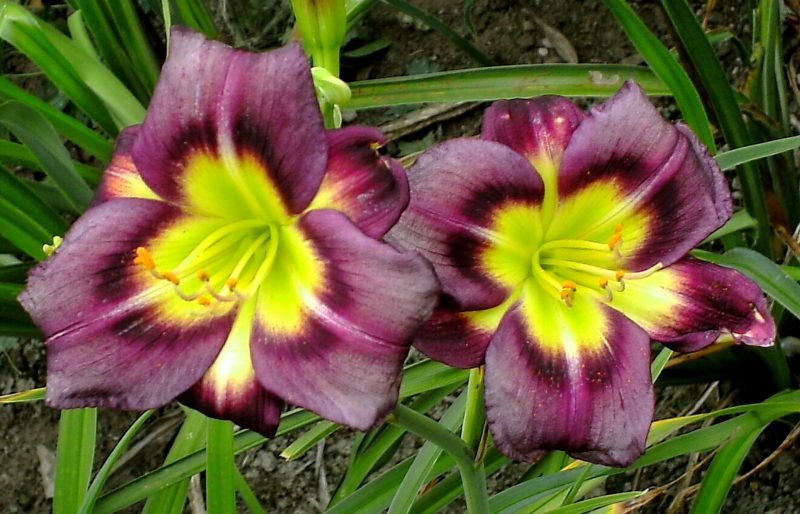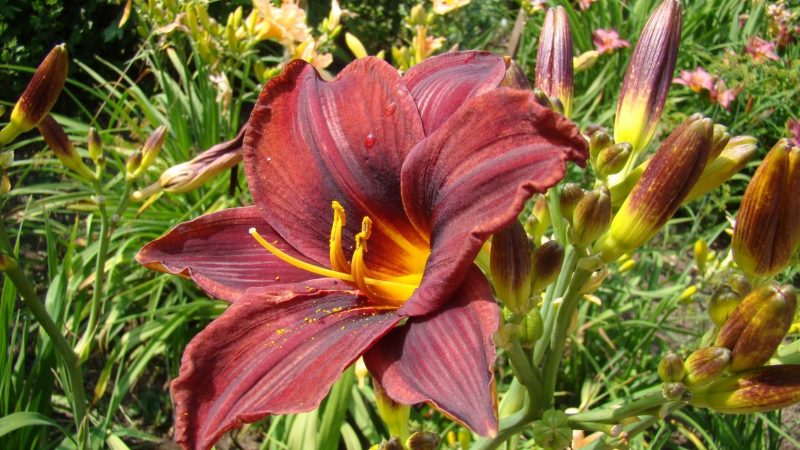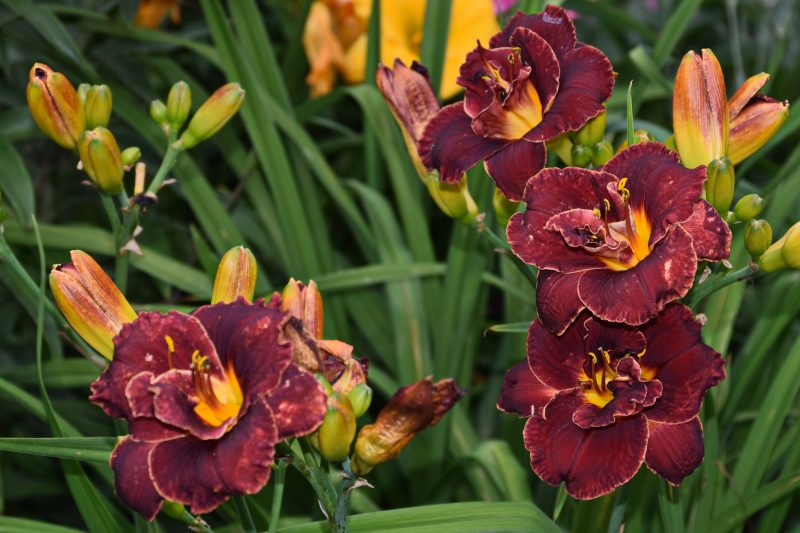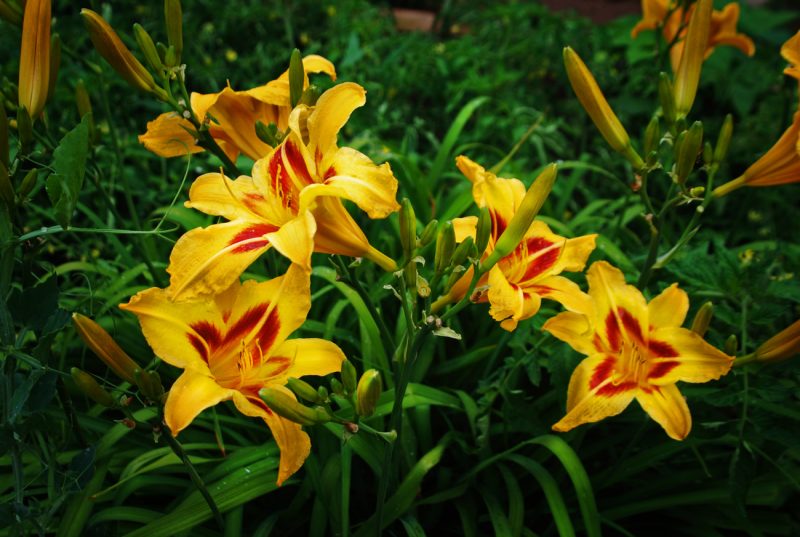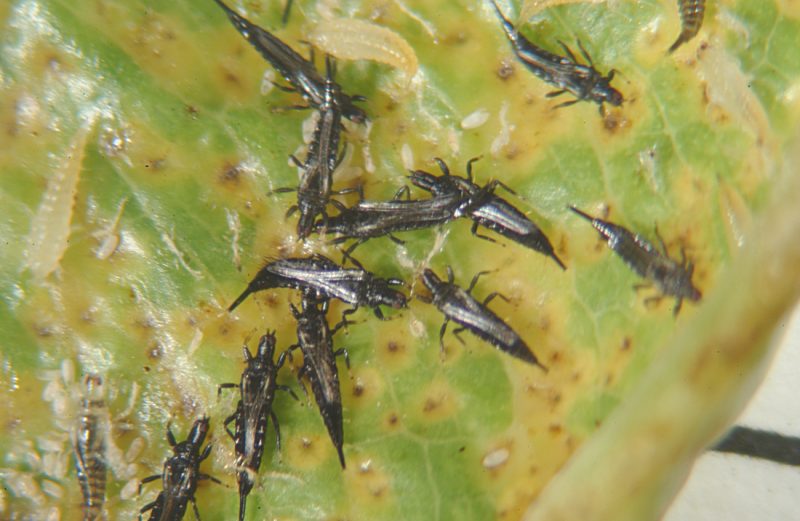Daylilies (hemerocallis) belong to those plants on the plot that you can forget about immediately after planting. But in order to achieve colorful and long flowering from them, it is nevertheless worth observing some rules of agricultural technology.
Material Content:
Varieties and varieties of daylily
Bred various varieties of daylilies blooming all summer. Krasnodnev, as this plant is also called, will not find equals among flowering crops, delighting with so long magnificent and colorful flowering.
There are a lot of varieties of culture, and the main ones:
- simple daylily;
- terry;
- arachnid;
- unusual shape;
- polymer;
- various multiforms.
Still daylilies can be miniature or gigantic, are terry, small-flowered or have very large flowers. Peduncles of some varieties are very branched, which makes the plant even more decorative.
- Pink daylilies are the most popular, and the most sought-after variety is Night Bacon. This is a hybrid plant with velvet flowers of a dense burgundy color. The pedicel can be up to 70 cm high, and the diameter of one flower sometimes reaches 12 cm.
- A true masterpiece created by the work of breeders is the Best Seller hybrid. The diameter of a flower of this variety can reach 14 cm. The edges of the petals are very corrugated, one flower every day blooms on the peduncle.
- Bright wine color in the flowers of the hybrid Burgundy Love. In diameter, the flower can reach 15 cm. The variety blooms very early and has excellent winter and drought-resistant qualities.
- Very delicate flowers at the white daylily Pandoras Box.The flower stalk height of this variety is only 50 cm, but the plant looks very elegant and unpretentious.
- Yellow daylily looks very beautiful, the varieties of which amaze with variety and decorativeness.
Outdoor landing
The proper planting of daylilies in the garden is, first of all, the choice of a good place.
Although these flowers are surprisingly unpretentious, it is advisable to choose a sunny area for them. The plant will put up with the shadow, but in this case it will not bloom magnificently or refuses to bloom at all.
- When planting between plants leave about 70 cm. If the variety is large, then between the seedlings can be left up to a meter.
- If the site is heavy clay soil, then when digging make sand, drainage materials, crushed peat. Poor soil is enriched with humus. During planting, ash and mineral fertilizers are added to the hole. Sour soil is lime.
- A common mistake when planting seedlings is the deepening of the neck. If planting daylilies to a depth of more than 3 cm, they will bloom much worse.
- The selected area is first dug up on a bayonet. Then the ground is leveled and holes are excavated.
- The plant is lowered into the hole, straighten the roots and cover them with soil.
- After planting daylilies need to be shed plentifully.
- During spring planting, the soil around the bushes is mulched to avoid quick drying. If planting is done in the fall, then daylilies are not needed to mulch.
How to care for "flowers of joy"
The plant does not require painstaking care, but some conditions still need to be met so that the flower pleases the eye with its healthy appearance.
Watering Rules
If a transplant is not required, then caring for the crop is reduced to mandatory watering. Daylilies love water very much, although they can easily survive drought. If the foliage of the bush has become faded, then it is time to water it. Also, the plant loves sprinkling. When watering, soak the soil by 20 cm.
Soil loosening
Around the bushes, the ground must be weeded and loosened. Daylilies mulch mainly in the southern and arid regions to reduce moisture evaporation. In the middle lane, this culture can not be mulched.
Loosening the soil is best done the day after watering to break the crust on the soil surface. Loosen very carefully, trying not to damage the root system.
Fertilizer and fertilizer
In the first year, young plants do not fertilize. Then, in spring and summer, complex mineral dressings for flowering crops are introduced. It is advisable to choose fertilizers with a minimum nitrogen content, since this element leads to excessive growth of foliage to the detriment of flowering. During the summer, it is enough to feed twice.
Feed should be in liquid form immediately after watering. It is advisable to fertilize the bushes in the evening or afternoon in cloudy weather.
How to transplant daylilies
Without a transplant, this crop can grow up to 15 years, but only the first seven will be the most plentiful flowering. Therefore, plants still have to be transplanted. The best time for this is early spring. In the regions of the middle zone daylilies can be transplanted all season until late autumn.
- When transplanting, the bush is dug up and divided into several parts by a shovel. So the root system is rejuvenated, and at the same time the grower receives a lot of new planting material.
- If the transplant was carried out in the summer, it is necessary to shadow the weakened bushes. You can put a beach umbrella or pull a fabric canopy.
- The transplanted plant is watered abundantly for the first few days and loosens the soil around them so that the earth crust does not interfere with the flow of oxygen to the roots.
Shelter for the winter
When cold weather occurs, foliage must be cut. Although daylilies are frost-resistant plants, nevertheless, in a snowless winter, the roots of the bushes may suffer from cold weather. If little snow falls, the bushes should be covered with spruce branches or straw to protect the roots from freezing.
As soon as the snow begins to melt, daylilies are immediately released from the covering material, since mold can begin to develop on the root necks.
Daylily reproduction
Each of the methods of propagation of this plant has its pros and cons.
- The easiest way to breed daylilies in your garden is to divide an adult bush into several divisions. Such plants will inherit all the qualities of the mother and will bloom quickly.
- When the bush reaches four years of age, it can be dug up and the roots divided into several parts. Another signal that the bush should be divided is the shredding of flowers. The optimal time for dividing spring is the beginning of summer, although the procedure can be carried out all season.
- Breeders use seed propagation, but this method is very time-consuming for everyday life. In addition, plants grown from seeds may not inherit varietal maternal traits.
- You can save all species characteristics if you grow daylily from a small offspring. But this method cannot be called simple, since small sockets must first be grown in greenhouses in pots and only then planted in open ground. This usually takes several weeks.
Diseases and pests - how to treat
In open ground daylilies can attack pests. Also, the culture is susceptible to certain diseases.
Although in comparison with other inhabitants of the garden, daylilies are not so often ill, nevertheless troubles do happen sometimes.
Basically, the culture is prone to root rot, as well as fungal diseases.
In order to prevent the development of such diseases, in spring, the bushes are sprayed with fungicides for preventive purposes. But if the daylily still gets sick, it will have to be dug up, the roots washed, and then disinfected in a weak solution of potassium permanganate. After processing, the plant is planted in a new place.
- Of the parasites, thrips most often attack culture. These insects appear in early spring and begin to suck the juice from the leaves. The affected bushes will have to be destroyed, and the ground in the flower bed sprayed with insecticides.
- Lily gnats can live in plant buds, which can be eliminated only by cutting the peduncle.
- Spider mites and aphids are eliminated by spraying bushes with insecticides.
Common growing problems
Many gardeners have problems growing this plant. Sometimes, for example, there is no flowering, although planting was carried out according to all the rules, and fertilizers were introduced.
There may be several reasons why daylily does not bloom:
- Perhaps the selected variety is not suitable for cultivation in this climate zone. Heat-loving daylilies simply do not survive in the winter in the middle lane.
- You should also pay attention to the timing of flowering. Summer in our country is too short, and some varieties do not have time to give flowers.
Very often, it would seem, for no reason, foliage begins to turn yellow on daylily bushes. Perhaps the plant fell ill or is grown in violation of the basic rules of agricultural technology. For daylilies, the choice of site is very important, since in the sun the plant gives more peduncles and feels much better. Sunlight at noon is especially needed for this crop. Also, you can not plant a plant in areas with a close occurrence of groundwater or in lowlands.
For many varieties of daylilies, the proximity to a personal plot next to trees and shrubs is unacceptable.
Although the culture can come to terms with neighbors on the same flower bed, daylily can hurt next to a large tree. The fact is that the root system of a large tree or shrub is too aggressive and takes moisture and nutrients from daylilies.
“Flowers of joy” can come to terms with different conditions, but it is imperative that the site selected for their planting has loose, loamy soil with good drainage. If the soil is rich in organic matter, daylilies bloom wonderfully.The crop grows best on slightly acidic soil.
Daylilies are very unpretentious plants, and if the grower will follow the simplest recommendations for caring for them, the plants will thank lush and long flowering and will become the main decoration of a summer flower bed.


